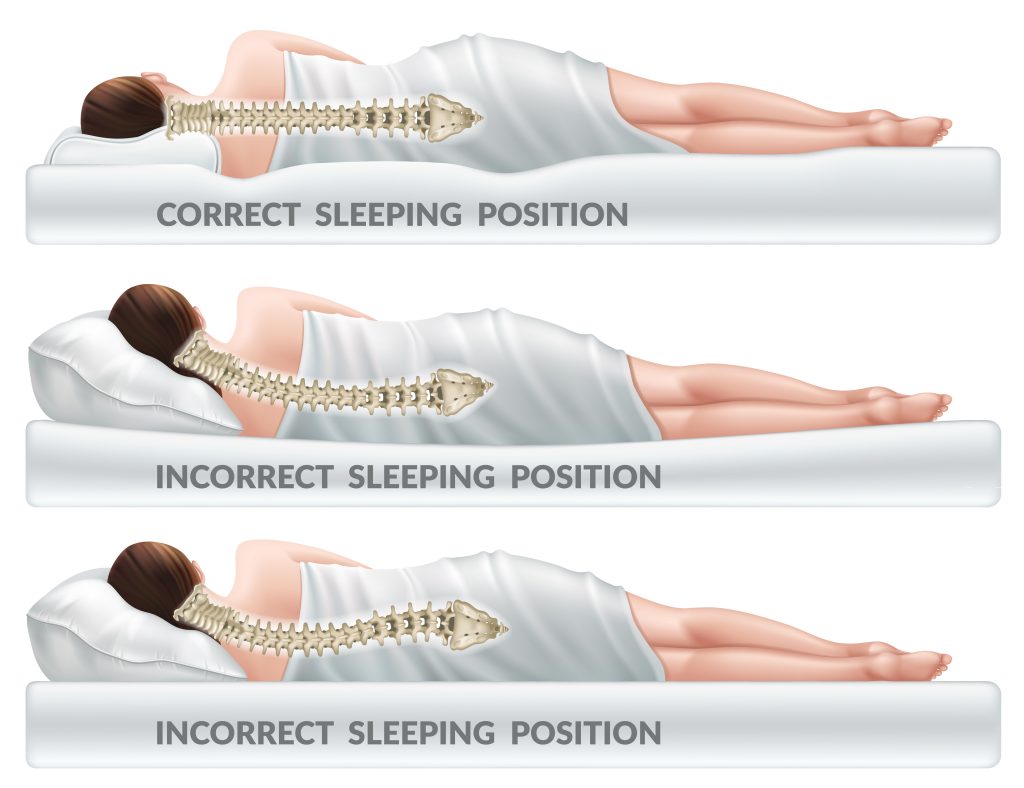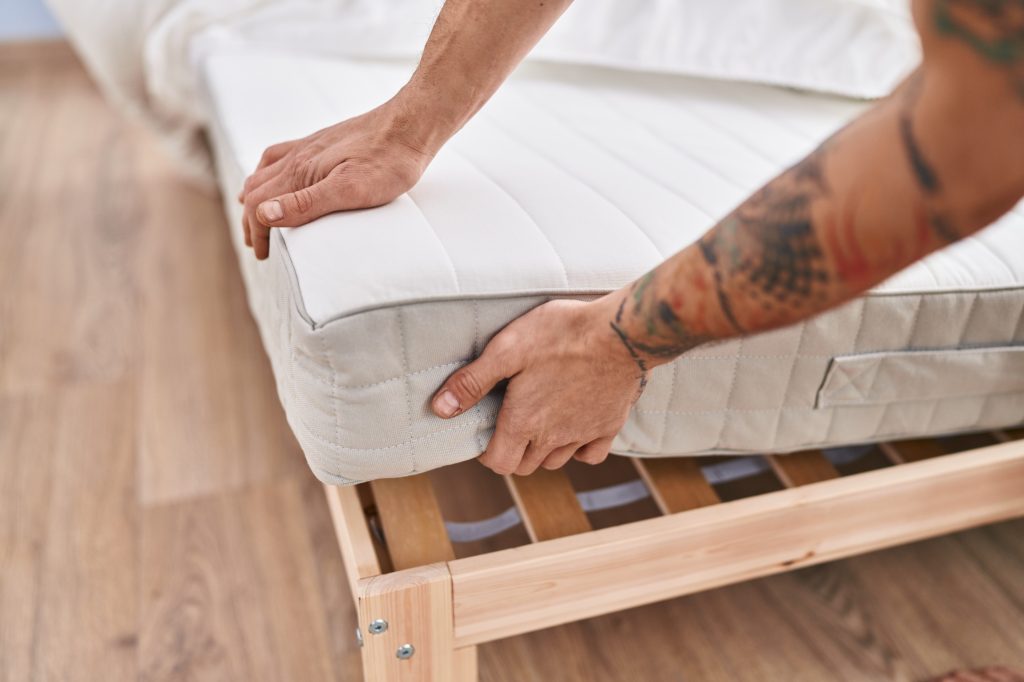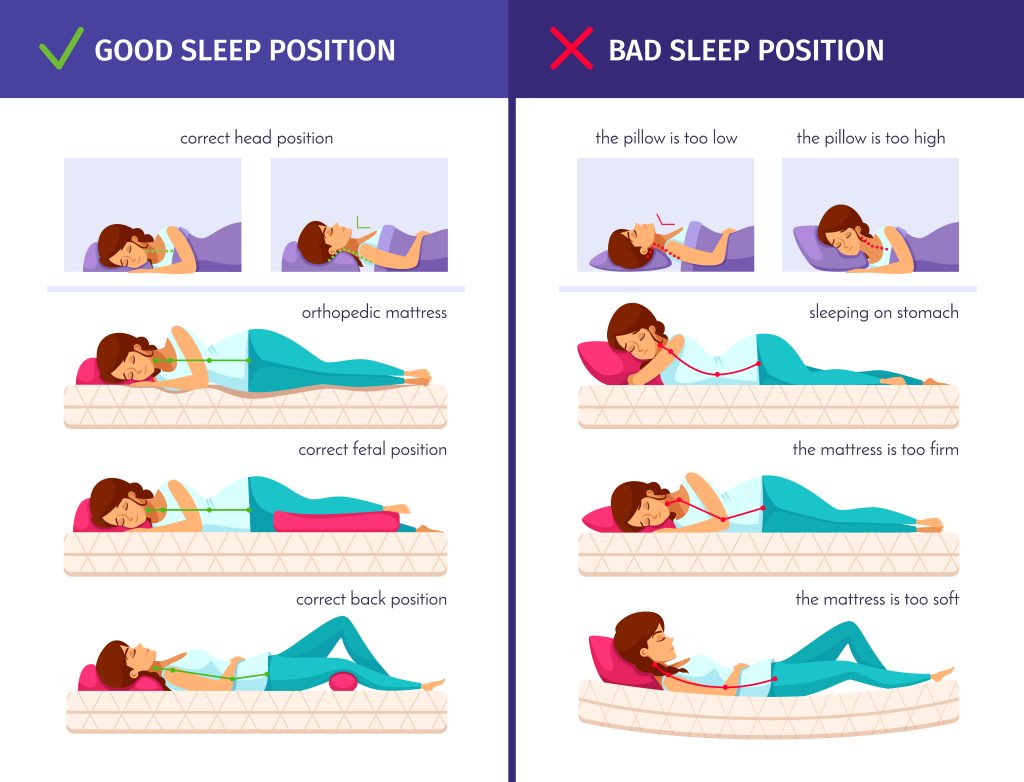How to Sleep with Lower Back Pain?
Lower back pain doesn’t take the night off, and poor sleep positions can worsen symptoms by stressing the lumbar spine and surrounding muscles. The right sleeping positions, pillow placement, and bedtime routine can reduce pressure on the lower back, align the spine, and improve recovery overnight. This guide explains how to sleep with lower back pain, the best and worst sleeping positions, how to use pillows, and when to seek care, with practical, evidence-aligned tips from King’s Spine Centre.
What causes lower back pain at night?
When lying down, certain positions flatten the lumbar curve or twist the spine, increasing strain on ligaments and facet joints, which can aggravate pain at night and on waking. Sleep posture also influences nerve irritation, disc pressure, and muscle guarding, which explains why many people wake up with lower back pain or feel worse when lying flat on the back or stomach. Research links sleep posture to back pain outcomes, with supportive side-lying and well-supported supine positions reducing symptoms versus prone positions increasing strain.
Best sleeping positions for lower back pain
Side sleeping with a pillow between
How to do it:
Lie on your side, slightly bend your knees, and place a firm pillow between them to keep hips, pelvis, and spine aligned. This reduces twisting that stresses the lumbar region.
Why it helps:
This position minimizes shear forces on the lower back and is often considered the best sleeping position for lower back pain, especially when alternating sides to avoid imbalances.

Back sleeping with a pillow under knees
How to do it:
Lie on your back and place a pillow under your knees to maintain the natural lumbar curve. Optionally, add a small rolled towel under the lower back for gentle support.
Why it helps:
Elevating the knees reduces anterior pelvic tilt and relieves pressure on the lumbar discs and joints, making it one of the best sleeping positions for back pain for those who prefer supine sleeping.
Side-lying fetal position
How to do it:
From a side-lying position, gently pull your knees toward the chest and use a supportive head pillow. Avoid curling too tightly to prevent hip strain.
Why it helps:
The fetal posture can open intervertebral spaces and reduce tension, often relieving symptoms from conditions like disc issues or stenosis. This makes it a best way to sleep with lower back pain for many people.
Semi-reclined or adjustable bed position
How to do it:
Elevate the upper body and slightly flex the knees using an adjustable bed or a wedge pillow to create a gentle recline.
Why it helps:
A semi-reclined posture reduces lumbar extension and posterior element loading, making it one of the best sleeping positions for spine-related pain in people who struggle lying flat.
Worst sleeping position for lower back pain
Stomach sleeping (worst position)
Why it’s bad:
Stomach sleeping flattens the spine’s natural curve and rotates the neck, increasing lumbar strain and causing morning soreness. It is typically the worst sleeping position for lower back pain.
How to modify if unavoidable:
Place a small pillow under the pelvis or lower abdomen and use a very thin head pillow to limit extension and rotation strain.
Pillow placement guide
Purpose: Keeps hips stacked and prevents the upper leg from pulling the spine into rotation, reducing lower back pain while sleeping.
Pillow under the knees (supine)
Purpose:
Maintains lumbar lordosis, offloading discs and joints for back sleeping. Consider a small towel under the lower back for comfort if there is a gap.
Pillow under the pelvis (prone)
Purpose:
Reduces lumbar extension and anterior tilt when stomach sleeping cannot be avoided, making stomach sleeping less provocative.
Body pillow for side sleepers
Purpose:
Helps maintain neutral alignment from head to knees, reducing night-time twisting and making it easier to stay in a sleep position for lower back pain.
Mattress and bed setup
Mattress choice
Purpose:
A medium-firm mattress often supports the lumbar curve while distributing pressure, improving sleep with lower back pain and morning comfort, though individual preference matters.
Adjustable bases
Purpose:
Small elevation changes in an adjustable bed position for lower back pain can relieve pressure points and reduce pain while sleeping.

How to lie down and get up with lower back pain
Getting into bed
How to do it:
Sit at the edge of the bed, lower yourself onto your side with support from your arms, then roll into the chosen position with knees bent to reduce strain. This helps when figuring out how to lay down with lower back pain.
Getting out of bed
How to do it:
Roll to your side, drop your legs off the bed, and push up with your arms (log-roll technique) to avoid sudden lumbar flexion or extension, reducing lower back pain during sleep transitions.
Night routine and sleep hygiene for back pain
Warm shower and gentle stretches
Purpose:
Warm showers and gentle stretches before bed can reduce muscle guarding, improving how to sleep with back pain and helping those who can’t sleep due to lower back pain.
Sleep environment and routine
Purpose:
Maintain a consistent schedule, keep the room dark and quiet, and avoid heavy meals late at night to reduce awakenings that increase pain perception, supporting people with back pain sleeping problems.
If back sleeping is difficult
Why some can’t sleep on their back
Reason & Tips:
Many ask “why can’t I sleep on my back?” The reason is often loss of lumbar support or tight hip flexors. Try a pillow under the knees, a small lumbar roll, or a semi-reclined position to tolerate supine sleep.
How to practice back sleeping
Tip:
Gradually increase the time spent on your back nightly with proper support until comfort improves. This also benefits those who must alternate sleep positions.
If waking up with lower back pain
Waking up with lower back pain
Reason & Tips:
Waking up with lower back pain suggests the sleep setup is not maintaining neutral alignment or there is insufficient support in the mattress and pillow configuration. Adjust your position and pillow placement, consider a medium-firm mattress, and use the log-roll technique for getting out of bed to reduce morning pain.
Side sleepers with lower back pain
Tips:
For lower back pain side sleepers, ensure the head pillow keeps the neck aligned and the knee pillow prevents the top leg from pulling the pelvis into rotation.
If the shoulder or hip is sore, add a thin pillow under the waist or use a mattress topper to minimize pressure points while sleeping with lower back pain.

Stomach sleepers and flat-back discomfort
Alternate positions for lower back pain
Tips:
If lying flat on your back hurts, try knees-elevated supine or semi-reclined positions to reduce lumbar strain and tension on the posterior elements.
If a stomach sleeper has lower back pain, place a pillow under the pelvis and omit the head pillow to help keep the spine closer to neutral, reducing pain during sleep.
Practical quick fixes
Tips:
Place a pillow under your knees for back sleeping or between your knees for side sleeping tonight to reduce pressure quickly and test immediate comfort changes.
Try a wedge pillow or slightly elevate the head and knees using an adjustable bed for a semi-reclined position that reduces lumbar extension and may be the best way to sleep with back pain for some.
When to seek medical care
Guidelines:
Seek care urgently if there is new bowel or bladder control loss, progressive leg weakness, or severe night pain unrelieved by position changes, as these may indicate serious conditions.
If symptoms persist despite optimal sleep strategies, a professional assessment can identify disc, nerve, or joint causes that need targeted care.
How King’s Spine Centre can help
King’s Spine Centre provides a comprehensive evaluation, advanced imaging when needed, and personalized treatment plans for lower back pain. Our specialists offer guidance on the best sleeping positions for lower back pain, including tailored pillow placement to support the spine and relieve pressure.
Combined with evidence-based physiotherapy, ergonomic recommendations, and lifestyle advice, these strategies help patients sleep more comfortably, reduce pain, and recover faster.
Don’t let lower back pain disrupt your sleep or daily life. Book a consultation at King’s Spine Centre today and get expert care designed to restore your comfort and mobility.
Frequently Asked Questions (FAQs)
The most supported options are side sleeping with a pillow between the knees or back sleeping with a pillow under the knees to maintain neutral alignment.
Stomach sleeping is usually the worst sleeping position for lower back pain due to lumbar extension and neck rotation strain.
Yes, a firm pillow keeps the pelvis and spine aligned, reducing twisting and lower back pain while sleeping.
Elevating the head and knees can offload the lower back, and many find this adjustable bed position for lower back pain beneficial.
Flat positions without support can increase facet joint pressure and muscle tension; adding pillows and adjusting posture often reduces pain.
Medical Disclaimer
This blog is for informational purposes only and is not a substitute for professional medical advice, diagnosis, or treatment. Always consult your physician or a qualified healthcare provider regarding any medical questions or concerns.
Review Note
This content has been medically reviewed by the spine care team at King’s Spine Centre, Dubai, to ensure accuracy and relevance. Our team follows evidence-based guidelines and uses advanced diagnostic tools such as MRI and CT scans to evaluate spinal conditions.

